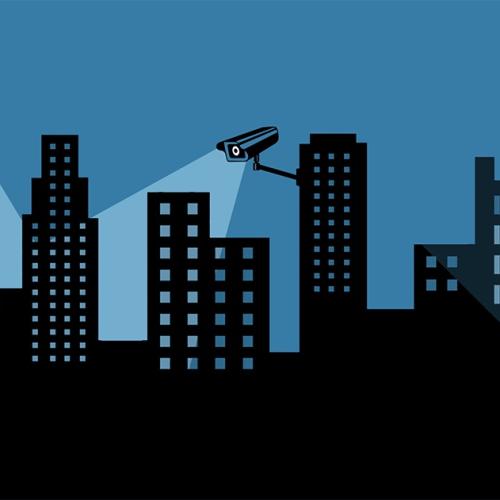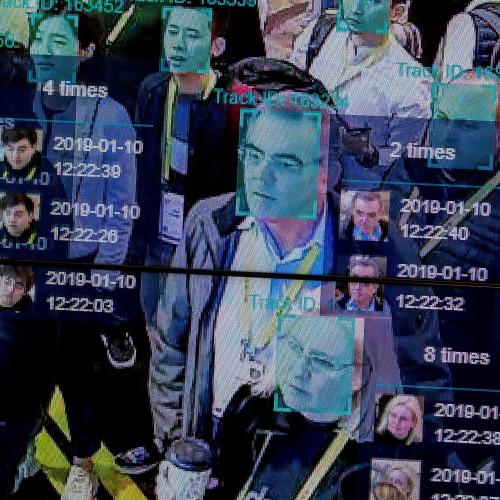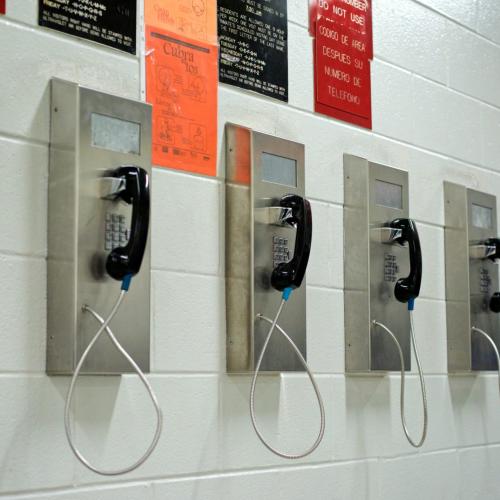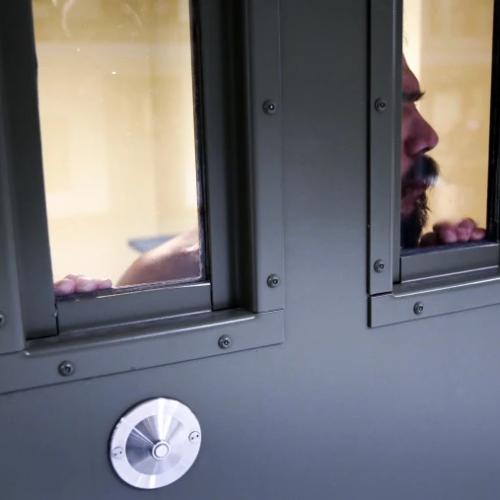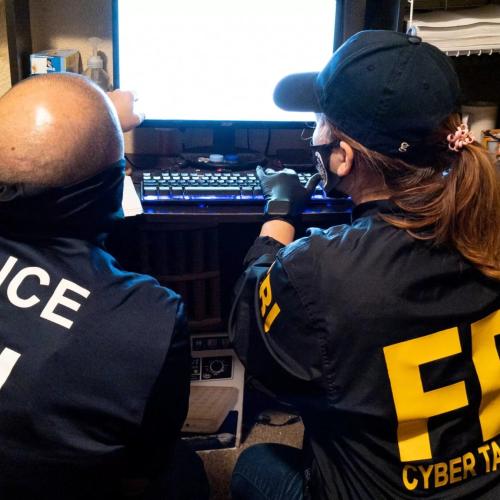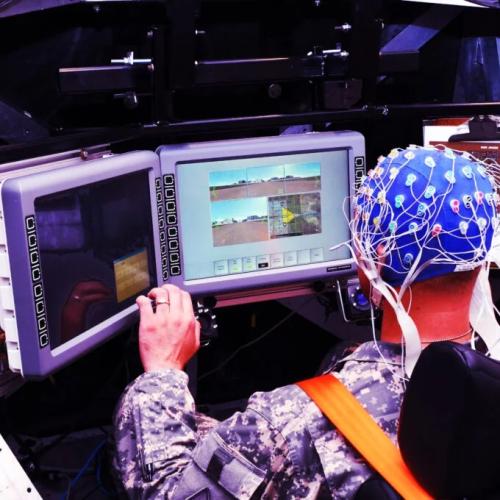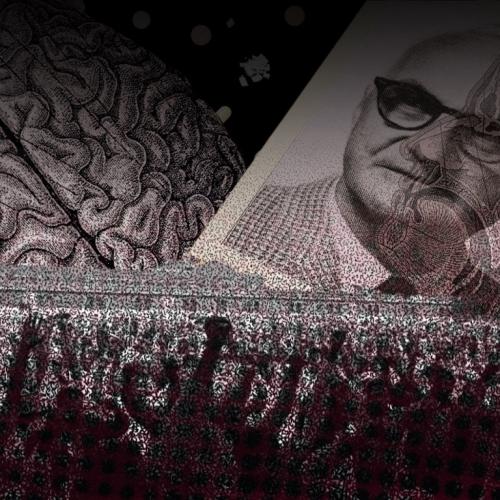Microchip Implants Media Articles
Below are key excerpts of revealing news articles on Microchip Implants from reliable news media sources. If any link fails to function, a paywall blocks full access, or the article is no longer available, try these digital tools.
When the U.S. Food and Drug Administration approved implanting microchips in humans, the manufacturer said it would save lives, letting doctors scan the tiny transponders to access patients' medical records almost instantly. The FDA found "reasonable assurance" the device was safe, and a sub-agency even called it one of 2005's top "innovative technologies." But neither the company nor the regulators publicly mentioned this: A series of veterinary and toxicology studies, dating to the mid-1990s, stated that chip implants had "induced" malignant tumors in some lab mice and rats. "The transponders were the cause of the tumors," said Keith Johnson, a retired toxicologic pathologist, explaining ... the findings of a 1996 study he led at the Dow Chemical Co. Leading cancer specialists reviewed the research for The Associated Press and ... said the findings troubled them. Some said they would not allow family members to receive implants, and all urged further research before the glass-encased transponders are widely implanted in people. To date, about 2,000 of the so-called radio frequency identification, or RFID, devices have been implanted in humans worldwide. Did the agency know of the tumor findings before approving the chip implants? The FDA declined repeated AP requests to specify what studies it reviewed. The FDA is overseen by the Department of Health and Human Services, which, at the time of VeriChip's approval, was headed by Tommy Thompson. Two weeks after the device's approval took effect on Jan. 10, 2005, Thompson left his Cabinet post, and within five months was a board member of VeriChip Corp. and Applied Digital Solutions. He was compensated in cash and stock options.
Note: For more reliable information about the use and dangers of microchips, click here.
Some Amish farmers say a state requirement that they tag cattle with electronic chips is a violation of their religious beliefs. Last year, the state Department of Agriculture announced that Michigan cattle leaving farms must be tagged in the ear with electronic identification as part of an effort to combat bovine tuberculosis. That has drawn some resistance from the Amish, who typically shun technology. In April, Glen Mast and other Amish farmers appeared before the state Senate Appropriations Committee, urging it to block the program. "We're never happier than when we're just left alone," said Mast, whose farm in Isabella County operates without electricity. "That's all we're asking." State officials say the ability to trace food sources is increasingly important in the global economy. State officials said cattle are to be tagged if they are leaving the farm to be sold or change ownership. Kevin Kirk, who coordinates the program for the state agriculture department, said Amish farmers produced a "very, very small" percentage of the nearly 397 million pounds of beef sold by Michigan farmers last year. "Our No. 1 goal is animal health, human health and food safety," Kirk said. "I know it's hard sometimes to trust the government, but that's what we're asking is trust us." So far, the state has not forced the Amish to use the electronic tags but said they can wait until the animals arrive at an auction before having them applied, the newspaper said. Animal identification has traditionally involved a plastic or metal tag, or tattoo. Electronic ID uses a radio frequency device with a number unique to each animal, and speeds up the ability to locate or trace animals.
Note: To read an article that explains in more depth how the attitude of the Amish to the use of electronic chips on their cattle is that it is the "mark of the beast" in Bible prophecy, click here.
The ability to blend vast databases containing personal information -- and the sophistication of tracking devices that can announce your presence along with myriad vital statistics when you cross a bridge or enter a room -- have brought Americans to a crossroads. Do we shrug and concede that privacy is lost -- "get over it," as one titan of tech declared so bluntly? Or do we look for ways to draw the line, to identify means and places where employers and governments should not dare to tread? One such place: Our bodies. Life has begun to imitate art -- as in the futuristic film "Minority Report" -- with the refinement of toothpick-thick microchips that can be implanted in your arm and packed with loads of personally identifiable information that can be beamed to the world. These radio-frequency identification (RFID) devices -- or "talking bar codes" -- amount to miniature antennas that transmit the types of information that might otherwise be held on a swipe card. Even if you've shrugged through the debates about warrantless wiretapping and said "what the heck" at the prospect that everything from your spending habits to your Web site travels are being compiled and crunched for commercial purposes, you might think twice about letting your employer insert a microchip under your skin as a condition of getting a job. As of today, it is both a technical and a legal possibility. Just last year, a ... provider of video-surveillance equipment inserted ... microchips into the arms of two employees. Those two workers volunteered, but it's not hard to imagine the lightbulbs going off in Corporate America. Is Joe really making a sales call or is he taking in a baseball game at AT&T Park? How many smoke breaks is Mary taking? Amazingly, there is no California law against "chipping" workers as a condition of employment.
Note: For many reliable reports from the major media on the potential dangers of microchips, click here.
Imagine a day when the U.S. government implants microchips inside the brains of U.S. soldiers. Well you don't have to think too far into the future. The defense department is studying the idea now. The chip would be the size of a grain of rice. How far is too far when it comes to privacy? The department of defense recently awarded $1.6 million to Clemson University to develop an implantable biochip. It would go into the brain using a new gel that prevents the human body from rejecting it. The overall idea is to improve the quality and speed of care for fallen soldiers. "It's just crazy. To me, it's like a bad sci-fi movie," says Yelena Slattery [from] the website www.WeThePeopleWillNotBeChipped.com. Slattery says, "Soldiers can't choose not to get certain things done because they become government property once they sign up. When does it end? When does it become an infringement on a person's privacy?" Once the chip is in, she says, could those soldiers be put on surveillance, even when they're off-duty? A spokesman for veterans of foreign wars also urged caution. Joe Davis said, "If you have a chip that's holding a gigabyte, or 10 gigs, like an iPod, what kind of information is going to be on there? How could this be used against you if you were taken captive?"
Note: For a treasure trove of recent and reliable information on the increasing penetration of microchips into our lives, click here.
CityWatcher.com, a provider of surveillance equipment, attracted little notice itself until a year ago, when two of its employees had glass-encapsulated microchips with miniature antennas embedded in their forearms. The "chipping" of two workers with RFIDs radio frequency identification tags ... was merely a way of restricting access to ... sensitive data and images ... the company said. Innocuous? Maybe. But the news that Americans had, for the first time, been injected with electronic identifiers to perform their jobs fired up a debate over the proliferation of ever-more-precise tracking technologies and their ability to erode privacy in the digital age. To some, the ... notion of tagging people was Orwellian. Chipping, these critics said, might start with Alzheimer's patients or Army Rangers, but would eventually be suggested for convicts, then parolees, then sex offenders, then illegal aliens until one day, a majority of Americans, falling into one category or another, would find themselves electronically tagged. "It was scary that a government contractor that specialized in putting surveillance cameras on city streets was the first to incorporate this technology in the workplace," says Liz McIntyre, co-author of Spychips: How Major Corporations and Government Plan to Track Your Every Move with RFID. Within days of the company's announcement, civil libertarians and Christian conservatives joined to excoriate the microchip's implantation in people.
Note: For educated speculation on how certain powerful people might like to have everyone implanted with microchips for security and control purposes, click here.
Let's say your teenager is a habitual truant and there is nothing you can do about it. A Washington area politician thinks he might have the solution: Fit the child with a Global Positioning System chip, then have police track him down. "It allows them to get caught easier," said Maryland Delegate Doyle Niemann (D-Prince George's), who recently co-sponsored legislation in the House that would use electronic surveillance as part of a broader truancy reduction plan. "It's going to be done unobtrusively. The chips are tiny and can be put into a hospital ID band or a necklace." Niemann's legislation mirrors a bill sponsored by state Sen. Gwendolyn Britt (D-Prince George's). Both would provide truants and their parents with better access to social services, such as mental health evaluations and help with schoolwork. Electronic monitoring would be a last resort. Still, the prospect of tagging children and using them in some "catch and release" hunt by police casts a pall over everything that's good about the plan. Odd how billions and billions of dollars keep going to a war that almost nobody wants, but there's never enough to fund the educational programs that nearly everybody says are needed. Aimed solely at students in Prince George's the only predominantly black county in the Washington area the truancy effort is called a "pilot program," a first-of-its-kind experiment. It would cost $400,000 to keep track of about 660 students a year.
Note: For more reliable information on the push to microchip the entire population, click here.
They say money talks, and a new report suggests Canadian currency is indeed chatting, at least electronically, on behalf of shadowy spies. Coins containing tiny transmitters have mysteriously turned up in the pockets of at least three American contractors who visited Canada, says a branch of the U.S. Defence Department. Security experts believe the devices could be used to track the movements of defence industry personnel dealing in military technology. According to a report from the U.S. Defence Security Service, "On at least three separate occasions between October 2005 and January 2006, cleared defense contractors' employees travelling through Canada have discovered radio frequency transmitters embedded in Canadian coins placed on their persons." A service spokeswoman said details of the incidents were classified. The type of transmitter in play and its ultimate purpose remain a mystery. However, tiny tracking tags, known as RFIDs, are commonly placed in everything from clothing to key chains to help retailers track inventory. Each tag contains a miniature antenna that beams a unique identification code to an electronic reader. The information can then be transferred by the reader into a computerized database.
With 32 wires sprouting from a cap on his head, University of Washington research assistant C.J. Bell stared at a computer screen and thought: "Red." Across the room, a 2-foot-tall robot called Morpheus shuffled up to a table holding a green block and a red block. Tilting his head, the machine scanned the choices with camera "eyes." Morpheus paused, then picked up the red block. Morpheus has a 94 percent success rate at reading simple mental commands. But he's only a first step toward developing a practical household robot controlled solely by brain waves, said Rajesh Rao, leader of the UW robot team and associate professor of computer science and engineering. Other researchers have wired humans to machines that allow them to move a cursor on a computer screen or operate a robotic arm with their thoughts. But those connections require electrodes inside the person's skull. With the system Rao and his colleagues have developed, the operator only suffers a bad hair day. To prepare for the demonstration, Bell pulled on the tight-fitting cap while fellow graduate student Pradeep Shenoy filled a 4-inch syringe with conductive gel. Shenoy injected the gel into the openings in the cap, and fitted an electrode to each. "The electrodes don't actually touch the skull," he explained. "They float in the goo, and the goo touches the skull. "Robotics is already an $11 billion-a-year industry. Bill Gates likens it to the computer business in 1970, when he and Paul Allen founded Microsoft.
Farmers and ranchers won't be forced to register their cows, pigs and chickens in a nationwide database aimed at helping track the outbreak of disease, the Bush administration said Wednesday. Hoping to dampen widespread opposition to the animal tracking program, the Agriculture Department has decided it should remain voluntary. First promised in response to the discovery of mad cow disease in this country, the tracking system would pinpoint an animal's movements within 48 hours after a disease was discovered. Investigators never found all 80 of the cattle that came to the U.S. from Canada with the infected dairy cow that became the country's first case of mad cow disease in 2003. Many cattle ranchers are wary of the program because they want records kept confidential and don't want to pay for the system. The industry estimates it could cost more than $100 million annually.
If you have a passport, now is the time to renew it -- even if it's not set to expire anytime soon. In many countries, including the United States, passports will soon be equipped with RFID chips. And you don't want one of these chips in your passport. RFID stands for "radio-frequency identification." Passports with RFID chips store an electronic copy of the passport information: your name, a digitized picture, etc. And in the future, the chip might store fingerprints or digital visas from various countries. By itself, this is no problem. But RFID chips don't have to be plugged in to a reader to operate. Like the chips used for automatic toll collection on roads or automatic fare collection on subways, these chips operate via proximity. The risk to you is the possibility of surreptitious access: Your passport information might be read without your knowledge or consent by a government trying to track your movements, a criminal trying to steal your identity or someone just curious about your citizenship. Security mechanisms are also vulnerable, and several security researchers have already discovered flaws. One found that he could identify individual chips via unique characteristics of the radio transmissions. Another successfully cloned a chip. The Colorado passport office is already issuing RFID passports, and the State Department expects all U.S. passport offices to be doing so by the end of the year. Many other countries are in the process of changing over. So get a passport before it's too late.
Note: For lots of reliable, verifiable information on microchip implants: www.WantToKnow.info/microchipimplants
Kiss your keyboard goodbye: soon we'll jack our brains directly into the Net - and that's just the beginning. Two years ago, a quadriplegic man started playing video games using his brain as a controller. It spells the beginning of a radical change in how we interact with computers. Someday, keyboards and computer mice will be remembered only as medieval-style torture devices for the wrists. All work - emails, spreadsheets, and Google searches - will be performed by mind control. [Consider] the sensational research that's been done on the brain of one Matthew Nagle. Nagle, a 26-year-old quadriplegic, was hooked up to a computer via an implant smaller than an aspirin that sits on top of his brain and reads electrical patterns. He learned how to move a cursor around a screen, play simple games, control a robotic arm, and even...turn his brain into a TV remote control [all] in less time than the average PC owner spends installing Microsoft Windows. Neurodevices - medical devices that compensate for damage to the brain, nerves, and spinal column - are a $3.4 billion business that grew 21 percent last year. There are currently some 300 companies working in the field. This kind of technology can enable a hooked-up human to write at 15 words a minute. Remember, though, that silicon-based technology typically doubles in capacity every two years. Last year, Sony took out a patent on a game system that beams data directly into the mind without implants. It uses a pulsed ultrasonic signal that induces sensory experiences such as smells, sounds and images.
A sensor implanted in a paralysed man's brain has enabled him to control objects by using his thoughts alone. The experimental set-up allowed the man, who has no limb movement at all, to open e-mail ... and pinch a prosthetic hand's fingers. The US team behind the sensor hopes its technology can one day be incorporated into the body to restore the movement of paralysed limbs themselves. A team of scientists inserted the device, called a neuromotor prosthesis (NMP), into an area of the brain known as the motor cortex, which is responsible for voluntary movement. The NMP comprises an internal sensor that detects brain cell activity, and external processors that convert the activity into signals that can be recognised by a computer. Using the device, Mr Nagle was able to move a computer cursor to open an e-mail, play simple computer games, open and close a prosthetic hand, and use a robot limb to grasp and move objects. Mr Nagle said the sensor had restored some of his independence by allowing him to carry out a number of tasks - such as turning the lights on - that a nurse would normally do for him. He told the BBC: "I can't put it into words. It's just wild."
Feel like you're being followed? Maybe it's a tracking tag on your jeans or one implanted in a credit card. The tags are called radio frequency identification or RFIDs, and every day they are becoming more and more a part of our lifestyle. These Orwellian microchips, as minute as a grain of sand, identify and track products and even lost children at theme parks. They're being implanted in humans to alert hospitals about medical conditions. The tags can be so tiny, you may never know they are there. Retailers claim RFIDs are essential: alerting them when they're low on lipstick, air filters, sodas and other inventory. Embedded tags aren't so obvious. Hitachi Europe recently developed the world's tiniest RFID integrated circuit, small enough to be placed in a piece of paper. Some RFID chips are made to be imbedded in livestock, in pets and most recently in humans for a variety of reasons. RFID prices have dropped, and tagging has become practical for businesses. In-Stat, a high-tech research firm, reports more than 1 billion RFID chips were made last year and predicts that by 2010 the number will increase to 33 billion. Slightly larger than a grain of rice, RFID chips from VeriChip of Florida are manufactured for implanting in humans. The Food and Drug Administration approved human implants two years ago.
Note: For lots more on microchip implants, see http://www.WantToKnow.info/microchipimplants
The line between living organisms and machines has just become a whole lot blurrier. European researchers have developed "neuro-chips" in which living brain cells and silicon circuits are coupled together. The achievement could one day enable...the development of organic computers that crunch numbers using living neurons. To create the neuro-chip, researchers squeezed more than 16,000 electronic transistors and hundreds of capacitors onto a silicon chip just 1 millimeter square in size. They used special proteins found in the brain to glue brain cells, called neurons, onto the chip. However, the proteins acted as more than just a simple adhesive. "They also provided the link between ionic channels of the neurons and semiconductor material in a way that neural electrical signals could be passed to the silicon chip," said study team member Stefano Vassanelli from the University of Padua in Italy. The proteins allowed the neuro-chip's electronic components and its living cells to communicate with each other.
Note: For lots more on microchip implants, see http://www.WantToKnow.info/microchipimplants
Pentagon scientists are planning to turn sharks into "stealth spies" capable of tracking vessels undetected, a British magazine has reported. They want to remotely control the sharks by implanting electrodes in their brains, The New Scientist says. It says the aim is "to exploit sharks' natural ability to glide through the water, sense delicate electrical gradients and follow chemical trails". The research is being funded by the Pentagon's Defence Advanced Research Projects Agency (DARPA). It aims to build on latest developments in brain implant technology which has already seen scientists controlling the movements of fish, rats and monkeys. Such devices are already being used by scientists at Boston University to "steer" a spiny dogfish in a fish tank. The next step for the Pentagon scientists will be the release of blue sharks with similar devices into the ocean off the coast of Florida. Remote-controlled sharks...have advantages that robotic underwater surveillance vehicles just cannot match: they are silent, and they power themselves.
Note: This article fails to mention that electronic implants we used over 40 years ago to control the behavior of bulls, as reported on the front page of the New York Times on May 17, 1965. To see the Times article, go to http://www.WantToKnow.info/delgadobullnytimes.pdf. For lots more reliable information on government mind control programs: http://www.WantToKnow.info/mindcontrol
An Ohio company has embedded silicon chips in two of its employees - the first known case in which US workers have been "tagged" electronically as a way of identifying them. A private video surveillance company said it was testing the technology as a way of controlling access to a room where it holds security video footage for government agencies and the police. Embedding slivers of silicon in workers is likely to add to the controversy over RFID technology, widely seen as one of the next big growth industries. RFID chips inexpensive radio transmitters that give off a unique identifying signal have been implanted in pets or attached to goods so they can be tracked in transit. "There are very serious privacy and civil liberty issues of having people permanently numbered," said Liz McIntyre, who campaigns against the use of identification technology. "There's nothing pulsing or sending out a signal," said Mr Darks, who has had a chip in his own arm. "It's not a GPS chip. My wife can't tell where I am." The technology's defenders say it is acceptable as long as it is not compulsory. But critics say any implanted device could be used to track the "wearer" without their knowledge.
With a wave of his hand, Amal Graafstra, a 29-year-old entrepreneur based in Vancouver, Canada, opens his front door. With another, he logs onto his computer. Tiny radio frequency identification (RFID) computer chips inserted into Graafstra's hands make it all possible. The computer chips, which cost about $2, interact with a device installed in computers and other electronics. The chips are activated when they come within 3 inches of a so-called reader, which scans the data on the chips. The "reader" devices are available for as little as $50. Graafstra said at least 20 of his tech-savvy pals have RFID implants. "I can't feel it at all. It doesn't impede me. It doesn't hurt at all. I almost can't tell it's there," agreed Jennifer Tomblin, a 23-year-old marketing student and Graafstra's girlfriend. Mikey Sklar, a 28-year-old Brooklyn resident, said, "It does give you some sort of power of 'Abracadabra,' of making doors open and passwords enter just by a wave of your hand." The RFID chip in Sklar's hand, which is smaller than a grain of rice and can last up to 100 years, was injected by a surgeon in Los Angeles.
Sullivan, a Tennessee power company worker who lost both arms in a job-related accident, has been outfitted by Rehabilitation Institute of Chicago researchers with a kind of bionic arm, which is controlled directly by his thoughts. Sullivan doesn't have to think hard anymore about doing something; he simply does it the way he always did. "I feel my hand when I want to pick something up, then I just close my hand," he says. When he wants to grab a bottle of water, for instance, the computerized arm moves forward, the elbow bends and the mechanical hand grasps the bottle, bringing it to his lips, as his natural arm once did.
We bet that former Health and Human Services Secretary Tommy Thompson wishes he had gone to work for Breyers or Hershey's. To set a good example, he's preparing to consume his new company's product--VeriChip Corp's flesh-embedded medical radio chip. "It doesn't cause any pain," he assures us, explaining that a rice-size chip will be inserted into his arm. The chip stores coding that makes the user's health records available worldwide. Hospitals wave a radio wand over the arm to get the info. "People are dying all the time," he says, "because they can't access their medical information overseas."
The only grade school in this rural town is requiring students to wear radio frequency identification badges that can track their every move. Some parents are outraged, fearing it will rob their children of privacy. The badges introduced at Brittan Elementary School on Jan. 18 rely on the same radio frequency and scanner technology that companies use to track livestock and product inventory. The system was imposed, without parental input, by the school as a way to simplify attendance-taking and potentially reduce vandalism and improve student safety. Some parents see a system that can monitor their children's movements on campus as something straight out of Orwell. This latest adaptation of radio frequency ID technology was developed by InCom Corp., a local company co-founded by the parent of a former Brittan student, and some parents are suspicious about the financial relationship between the school and the company. InCom has paid the school several thousand dollars for agreeing to the experiment, and has promised a royalty from each sale if the system takes off, said the company's co-founder, Michael Dobson, who works as a technology specialist in the town's high school.
Important Note: Explore our full index to key excerpts of revealing major media news articles on several dozen engaging topics. And don't miss amazing excerpts from 20 of the most revealing news articles ever published.


















